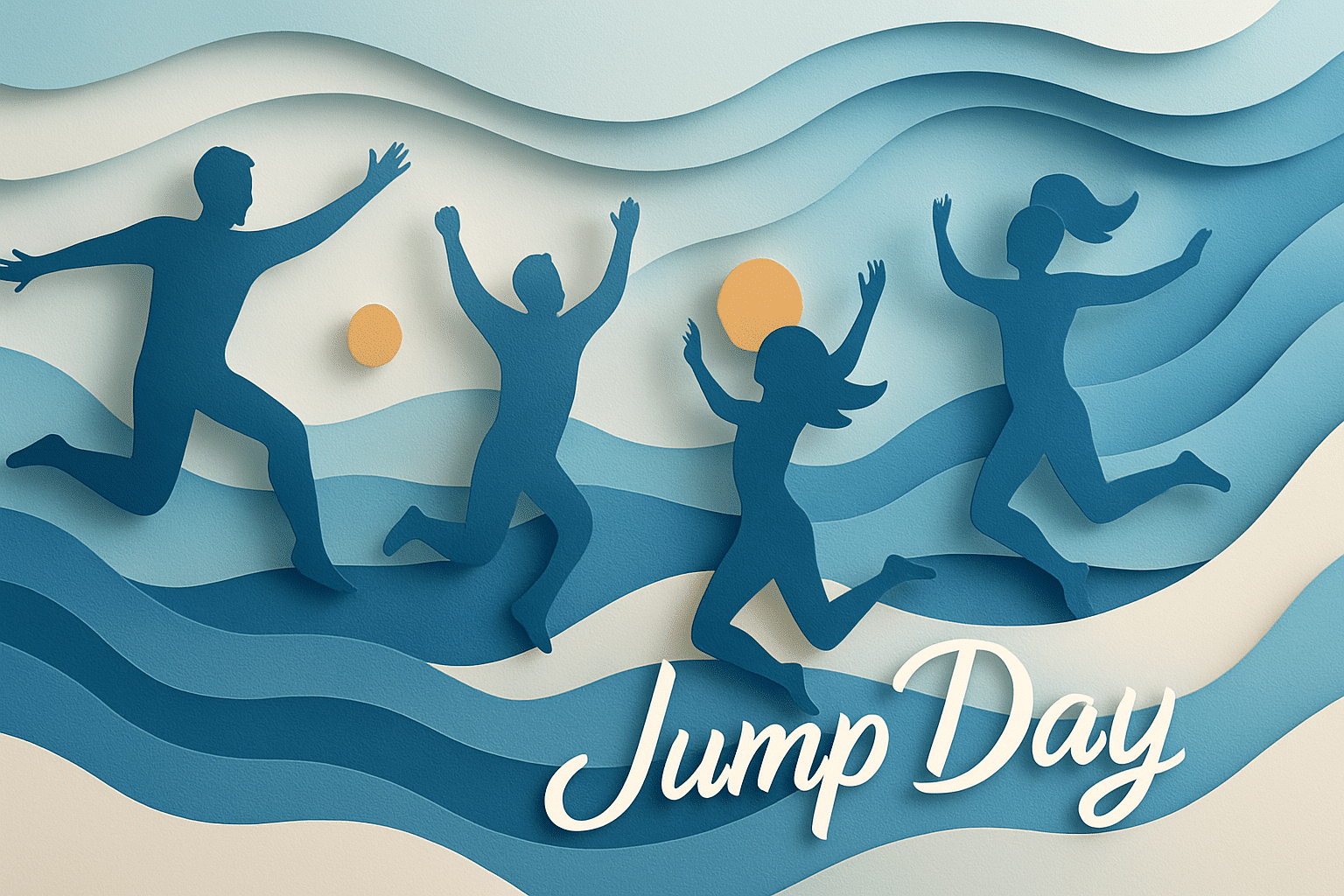What is Jump Day?
Jump Day is an informal celebration observed in various communities to promote physical activity, fun, and the benefits of jumping as exercise. While not an official global holiday, many schools, fitness groups, and sports clubs use the occasion to encourage people of all ages to get active through jumping activities. Jumping is a simple yet effective movement that improves coordination, strength, and cardiovascular health. Jump Day aims to remind people how accessible and enjoyable physical fitness can be. It often inspires games, challenges and group activities that involve jumping.
The day serves as a fun way to motivate individuals to incorporate more movement into their daily routines. Jumping can be done anywhere; on trampolines, during workouts, or even in playful settings like jump rope games. Participants often share videos or photos of their jumping efforts on social media to spread enthusiasm. The spirit of Jump Day lies in celebrating movement, energy and health. It also helps highlight the importance of staying active for overall wellbeing.
History and Origin
Jump Day does not have a formal founding or worldwide recognition. Instead, it has emerged organically in different places as part of fitness promotion and school wellness programs. Teachers and coaches use Jump Day events to encourage children to develop motor skills and enjoy exercise. The simplicity of jumping makes it ideal for inclusive participation.
The concept grew with increased awareness of sedentary lifestyles and the need for regular physical activity. Jumping offers a low-cost, low-barrier way to engage many people regardless of age or fitness level. Some communities organise special Jump Days featuring games like jump rope competitions, long jump contests, or trampoline sessions.
In recent years, social media has helped spread the idea further. Fitness influencers and health advocates promote jumping challenges during certain days or weeks to boost motivation. This online visibility connects people globally and creates a sense of shared activity.
Though Jump Day varies widely in how it is celebrated, the underlying message is consistent: movement is vital, jumping is fun, and physical activity is for everyone. It supports health education goals and encourages joyful participation.
Who participates in Jump Day?
- Children and students: Often engaged through school programs and play
- Fitness enthusiasts: Incorporate jumping into workouts and training
- Coaches and trainers: Lead group jump challenges and skill development
- Families: Participate together in games and fun physical activities
- Community groups: Organise local Jump Day events and social gatherings
Slogans and Themes
Jump Day celebrations focus on themes of energy, health and fun. Common slogans include “Jump Into Fitness,” “Leap for Joy,” and “Every Jump Counts.” These phrases highlight the positive impact of movement on body and mind. The themes encourage people to see exercise as enjoyable and accessible.
Colors, Symbols and Patterns
Colors
- Orange: Represents enthusiasm and vitality
- Green: Symbolises health and growth
- Blue: Suggests calm and balance
Symbols
- Jumping figure: Represents motion and physical activity
- Footprints: Indicate progress and movement forward
- Heart: Reflects health and wellbeing
Patterns
- Waves: Symbolise rhythm and flow of movement
- Zigzags: Express energy and excitement
- Circles: Represent cycles of activity and rest
Most Used Hashtags
- #JumpDay
- #JumpIntoFitness
- #LeapForJoy
- #JumpChallenge
- #MoveMore
How Do You Celebrate Jump Day?
- Participate in jump rope or trampoline sessions
- Join fitness classes with jumping exercises
- Organise friendly jumping competitions or games
- Share videos or photos of jumping activities online
- Encourage children to play and jump outdoors
Why is Jump Day Important?
Jump Day is important because it highlights the value of simple movements that improve health and fitness. Jumping increases heart rate, strengthens muscles and improves coordination. It is accessible to many people, making physical activity inclusive. The day encourages people to be active in a fun and social way, reducing barriers to exercise.
Moreover, Jump Day promotes awareness about the dangers of inactivity and sedentary lifestyles. By celebrating jumping, it motivates individuals to add more movement into their day. This can lead to better physical and mental health outcomes. Jump Day reminds us that fitness does not have to be complicated to be effective.
Features
July 20: Jump Day
Why do you keep falling for the same type?
Read the article Lovemaps: the hidden blueprint of our love.

